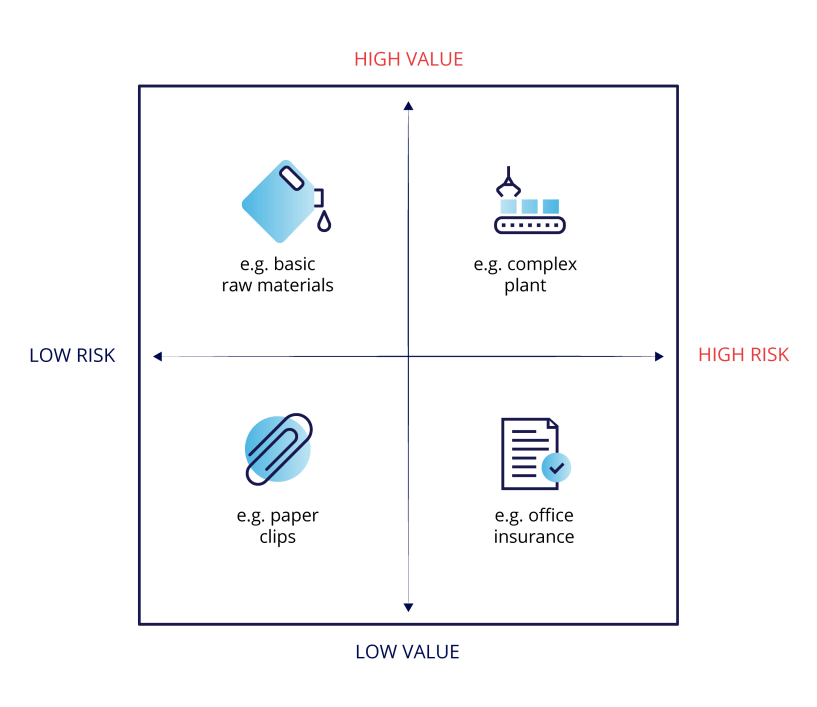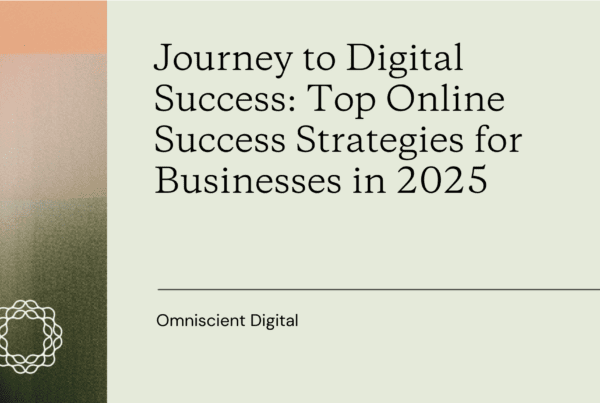
Are you looking to grow your business but not sure where to start? Market development might be your ticket to success.
While many companies focus on introducing new products to the existing market aka product development, there’s another way—taking your existing products into new markets.
It’s like being really good at making pizza in New York and deciding to open up shop in Chicago. (Don’t worry—we won’t get into the whole deep-dish debate!)
For B2B companies, smart market development—including adopting flexible payment solutions like B2B BNPL—can transform your business from a local hero to a market champion.
But success in new markets doesn’t happen by chance. While the potential rewards are huge, so are the risks if you go in without a solid game plan.

The good news? We’ve got you covered. From finding the right opportunities to increasing brand awareness in new markets, this guide will show you exactly what you need to do and how to do it.
Identifying new market opportunities
Let’s be real, you can’t just throw darts at a map and hope for the best. First, you’ll need to conduct market research to determine whether a new market is worth your time and energy. For e-commerce businesses, especially Shopify stores, market research can also reveal customer preferences and conversion bottlenecks. This Shopify research
highlights key insights.
Market research and analysis
For new market penetration, you’ll need to analyze:
- Market size and growth potential (because nobody wants to crash a tiny party)
- Competitive landscape (who’s already there and how they’re doing)
- Economic and political factors that might affect your success
- Cultural nuances that could impact how you do business
How to do this
Think of market sizing as your GPS for business growth. You wouldn’t start a road trip without directions, right? Grab those industry reports from IBISWorld or Statista (trust me, your wallet won’t hold a grudge), and get cozy with your target industry’s NAICS code.
Pro tip: Look for markets growing at least 5% annually. Anything less isn’t worth it.
Now it’s time to play detective with your competition. Track what they’re up to, where they’re hanging out, and how much they’re charging. Stalk them on social media (professionally, of course!) and test their products. It’s like dating. You need to know what you’re getting into!
Pro tip: Found a market where companies are profitable but about as innovative as a brick? Jackpot! That’s your cue for new market penetration.
Now for the “boring but important” part (like flossing, but for business). Check out local regulations and market stability. Sure, it’s not as exciting as competitor research, but neither is explaining to stakeholders why you overlooked legal requirements.
Finally, scope out those entry barriers. They’re like the bouncers of the business world. Some markets play hard to get, but hey, sometimes the toughest nuts to crack have the tastiest kernels inside. Just make sure the prize is worth the climb!
Identifying emerging markets and trends
Current market trends might not apply to a new market segment. Keep your finger on the market’s pulse by:
- Following industry publications (but don’t get lost in the rabbit hole)
- Attending trade shows (yes, those badges are worth it)
- Watching what your competitors are up to
- Spotting technological shifts that could create new opportunities
How to do it
Start by setting up Google Alerts for your industry’s buzzwords.
Subscribe to a couple of industry publications (but let’s be real, any more than three and they’ll just collect digital dust).
Want the real scoop? Cozy up to some LinkedIn groups where your target audience hangs out. Oh, and follow those industry influencers. They’re usually first to spot the next big thing. Oh, and follow those industry influencers. They’re usually first to spot the next big thing—including useful tools like Google Calendar extensions that can help track industry events more efficiently.
Pro tip: Give yourself a strict 30-minute trend-checking window each morning. Think of it as your industry’s version of checking the weather.
Keep track of what you find in a simple spreadsheet. And rate each trend’s potential impact on a scale of 1-5 (where 1 is “meh” and 5 is “stop everything and look at this!”).
Pro tip: If you can’t explain a trend to your grandmother, you probably need to dig deeper.
Understanding customer needs and preferences
Before going after new customers, you first need to build trust. Why? Because 84% of B2B buyers are likely to choose a vendor who clearly understands their business objectives.
Here’s where you put on your detective hat and really get to know your potential customers:
- Talk to them, listen to them, and figure out what keeps them up at night
- Conduct in-depth interviews with potential customer base
- Analyze pain points and challenges in different customer segments
- Understand buying behaviors and decision-making processes
- Identify unmet needs that your current solutions could address
How to do it
Start by really getting to know your existing customers.
Create a quick survey (if it takes longer than five minutes, it’s too long), and schedule short chats with your top 10 clients.
Pro tip: Oftentimes, the best insights come when we simply listen. It’s amazing what people will share when they feel heard.
Now, it’s time to look at potential customers. Think strategically. Identify five companies that match your ideal profile and study them like you mean it. Their job postings often reveal pain points they might not admit publicly, and their company news shows where they’re heading next.
Market research is all about connecting the dots. Follow your target companies on LinkedIn and watch for patterns in their discussions. When multiple companies mention the same challenges, you’ve just spotted an opportunity worth exploring.
Keep your findings organized and flowing. Document everything you learn (yes, even the obvious stuff), and make it a habit to share insights with your team weekly.
Pro tip: Your ideal customer profile should evolve as you gather more intelligence. What you know today might shift tomorrow.
Remember, we’re not just collecting data for the sake of spreadsheets. The goal is to understand real businesses with real challenges. Stay curious, be systematic, and let those surprising discoveries guide your strategy. Sometimes the best opportunities come from unexpected places!
Market segmentation
Now, it’s time to slice and dice your market into manageable chunks. It’s important to make sure you’re targeting the right people with the right message.
Dividing your target market
Consider these key factors when splitting up your market:
- Industry type (manufacturing, healthcare, tech—pick your flavor)
- Company size (from small but mighty to enterprise giants)
- Geographic location (because what works in Boston might flop in Worcester)
- Tech-savviness (are they early adopters or “if it ain’t broke” believers?)
How to do it
Start your segmentation journey with a clear framework.
Open up a fresh spreadsheet and map out each potential segment. Rate each one based on market size, solid growth potential, competition levels, and your honest ability to serve them well.
Pro tip: If a segment falls short on multiple factors, it’s usually time to look elsewhere.
Data gathering comes next. This is where tools like LinkedIn Sales Navigator really shine. Combine those insights with industry reports and your sales team’s front-line knowledge.
Pro tip: Keep things objective by using a simple 1-5 scoring system for each factor you’re measuring.
Finally, put those assumptions to the test in the real world. Run small pilot campaigns to see how different segments respond. Have actual conversations with companies in each group. Their responses often tell you more than any report could. Track what works, document what doesn’t, and let the results guide your next moves.
Identifying ideal customer profiles
Time to get specific about who you’re looking for:
- What makes them tick
- Their common pain points (the real ones—not what you think they are)
- How they make decisions (and who holds the purse strings)
- Their current tech setup and what they’re willing to change
How to do it
Creating solid customer profile templates starts with getting the basics right.
Map out company demographics like revenue, employee count, and geographic footprint. Then dig into their industry specifics and tech stack. This knowledge will help you speak their language from day one.
Next, zoom in on the decision-makers who matter. Document their titles, where they sit in the organization, and what keeps them up at night. Understanding their role in the buying process is crucial for tailoring your approach.
Pro tip: Outline who isn’t a good fit for your current products. Sometimes knowing who to avoid is as valuable as knowing who to pursue.
Now compare these new profiles with your successful customers. Don’t shy away from examining lost deals either. They often hold the most valuable lessons. Make sure to also check your win/loss patterns regularly to spot any gaps.
Pro tip: If your ideal customer profile doesn’t match at least 60% of your successful customers, it’s time for a refresh.
Tailoring your approach
One size doesn’t fit all. Here’s what you need to customize:
- Your value proposition (speak their language)
- Pricing strategy (what’s the sweet spot?)
- Marketing messages (hit those pain points)
- Sales approach (because cold calling isn’t always the answer)
How to do it
Start by crafting segment-specific materials. Pitch decks that resonate, case studies that feel familiar, and ROI calculators that make sense for their world.
Pro tip: Run your templates by existing customers first. They’ll let you know if you sound like a trusted advisor or a chatbot.
For pricing strategy, research what each segment can realistically spend, study competitive pricing, and create options that make sense.
Pro tip: Leading with the highest price tag isn’t always the best strategy. It’s about aligning value with expectations and delivering on promises.
Now, let’s talk about where and how to engage your segments. Figure out their favorite hangout spots (professionally speaking), what content catches their eye, and their preferred way of connecting. Some groups live on LinkedIn, while others swear by industry events. Your job is to meet them where they are.
Build your campaigns like a master chef, using the right ingredients for each segment. Mix up educational content, direct outreach, event marketing, and partner programs based on what appeals to each group.
Pro tip: Start with mastering one channel per segment before adding more to your menu.
Good segmentation isn’t about creating perfect categories—it’s about making your marketing and sales efforts more effective. If a segment isn’t leading to better results, it’s not the right segment.
Developing a strong market development strategy
Time to turn those insights into action. Let’s build a growth strategy that actually works and not just looks good in PowerPoint.
Setting clear goals and objectives
Get specific with your targets:
- Revenue goals (dream big, but keep it real)
- Market share targets (what’s your slice of the pie?)
- Customer acquisition numbers (quality over quantity)
- Timeline for expansion (Rome wasn’t built in a day)
How to do it
Time to get serious about your targets. Map out specific revenue goals for each segment, the number of new customers you’ll bring in each quarter, and the market share you’re aiming to capture.
Pro tip: Make these goals bold enough to raise your heartbeat a little. Comfort zones rarely lead to breakthrough results.
Your measurement framework needs to be crystal clear.
Keep close tabs on the metrics that matter: how much it costs to acquire customers, their lifetime value, how long deals take to close, and your win rates.
Pro tip: Set up systems to track these numbers religiously. If you can’t measure it, you can’t improve it.
Break these big ambitions into bite-sized pieces that make sense.
Think of it like a GPS recalculating your route. Quarterly objectives show the major turns, monthly targets keep you on the right road, and weekly activities ensure you’re making steady progress. Your daily tasks are the actual steps moving you forward.
Creating a comprehensive marketing plan
Your roadmap to success includes:
- Brand positioning (how you’ll stand out in the crowd)
- Content strategy (because everyone’s an expert until they have to write something)
- Lead generation tactics (beyond the old “spray and pray” approach)
- Partner development (sometimes it’s who you know)
How to do it
Start by nailing down what makes your story worth telling.
Your messaging should be as unique as your fingerprint. Define your angle, explain why people should care, and back it up with solid proof.
Pro tip: If your competitors could say the same things about themselves, head back to the drawing board.
Now it’s time to plan your content strategy with purpose.
Focus on creating pieces that genuinely help your audience: blog posts that solve real problems, case studies that tell compelling stories, and whitepapers people actually want to read.
Pro tip: One piece of content that hits the mark is worth more than ten that just add to the noise.
Now, let’s set up your lead generation engine. Choose the tools that make sense for your goals—whether that’s inbound marketing, account-based approaches, strategic partnerships, or industry events. Whatever you pick, make sure your follow-up process is locked and loaded.
Pro tip: Focus on quality over quantity—100 good leads beat 1,000 lousy ones.
Allocating resources and budget
Be smart about where you put your money and effort:
- Market research (because guessing is expensive)
- Marketing and sales activities (the engines of growth)
- Technology and tools (invest in what matters, including IT management solutions)
- Training (your team needs to be ready)
How to do it
Your budget framework needs to be both smart and flexible.
Split your resources thoughtfully: dedicate about 15% to research and planning, 40% to your marketing and sales muscle, 25% to essential tools and tech, and 20% to keeping your team sharp.
Pro tip: Always tuck away 10% for those unexpected opportunities (or challenges) that inevitably pop up.
Get strategic about where your money goes.
List out your absolute must-haves versus those nice-to-have items. Balance quick victories against long-term investments, and understand which costs are fixed and which can flex with your needs.
Pro tip: Start with the essentials and add as you prove return on investment (ROI).
Keep a close eye on how your investments are performing.
Think of it like a monthly/quarterly health check. Track your spending against results, review the numbers monthly, and make meaningful adjustments each quarter. When something’s working well, don’t be shy about doubling down on it.
Pro tip: Be ready to double down on what works and cut what doesn’t.
A strategy is only as good as its execution. The best product marketing plan in the world means nothing if you can’t or won’t follow through. Start small, prove what works, and then scale up.
Effective marketing and sales techniques for market development
Now let’s build a marketing and sales engine that is worth its weight in gold.
Digital marketing strategies
Your digital toolkit should include:
- SEO strategy that actually works (no black hat tricks here)
- Targeted advertising (because not everyone needs your widget)
- Account-based marketing (for when you’re fishing with a spear, not a net)
- Marketing automation (work smarter, not harder)
How to do it
Start with a thorough SEO checkup of your digital presence.
Know where you rank, understand your backlink profile, and give your content an honest review. Technical issues can sink your ship faster than you think, so tackle those early.
Pro tip: If you’re not on page 1, you might as well be invisible.
Your target audiences are probably hanging out on LinkedIn. Start advertising there by building targeted audience segments, playing around with different ad formats, and setting budgets that won’t keep you up at night. Also, run some Google Ads to catch those actively searching for solutions like yours.
Pro tip: Start small, test everything, and scale what works.
Now, let’s talk about targeting specific accounts that matter. Create detailed profiles of your dream customers and map out their decision-making teams. Research who holds the keys to decisions and understand their buying process.
Pro tip: When reaching out, personalization is your secret weapon. Better to truly connect with ten target accounts than to send generic messages to a hundred.
Content marketing and SEO
Create content that matters:
- Industry-specific solutions (show you know your stuff)
- Case studies (let your wins do the talking)
- Educational resources (be helpful, not salesy)
- Thought leadership
How to do it
Your content strategy starts with understanding your customer’s journey.
Think about how they move from first discovering they have a problem, through weighing their options, to making that final decision, and becoming a loyal advocate. Each stage needs its own content that answers the right questions at the right time.
Next, map out your content calendar with purpose.
This isn’t just about filling slots. It’s about creating pieces that actually move the needle. Think of it as planning a conversation with your audience, where each piece builds on the last.
When it comes to search optimization, focus on high-intent terms, long-tail terms opportunities, and question-based searches.
Pro tip: Keep your content authentic, valuable, and structured in a way that makes sense to both humans and search engines.
Social media marketing
Yes, B2B companies need social media too:
- LinkedIn (where business people actually hang out)
- Industry forums (find your people)
- Professional groups (network without the awkward coffee meetings)
- Targeted campaigns (right message, right place, right time)
How to do it
Time to polish your LinkedIn presence until it shines.
Start with a company page that truly reflects who you are (not just what you do). Get your team involved and excited about sharing their expertise. Think of your page as your digital storefront. It should be welcoming and worth visiting.
Make yourself at home in professional groups where your target audience hangs out. But remember, these aren’t just promotional platforms. They’re communities.
Share insights that actually help others, jump into discussions where you can add value, and be the expert you’d want to connect with.
Pro tip: Consistency beats perfection. Also, give more than you take.
Email marketing
Keep your emails from hitting the trash folder:
- Welcome sequences that actually welcome
- Nurture campaigns that don’t feel like stalking
- Newsletters people want to read
- Event invitations worth opening
Here’s how you can make it happen
Start by laying a solid email foundation that makes sense.
Properly segment your list by industry, interest, engagement level, and buying stage.
Also, think of your email templates as conversations waiting to happen, not just broadcasts to send.
Pro tip: Test everything, especially subject lines.
Your email sequences should feel like a natural dialogue.
Welcome your new contacts properly. Show them the value they can expect, point them to helpful resources, and make it clear what’s coming next.
When it comes to nurturing flows, mix it up with content that matters. Share educational pieces that solve real problems, sprinkle in success stories that inspire, keep them posted on product improvements, and invite them to events where they can learn more.
Pro tip: The best email is the one that feels personal.
Sales enablement and training
Equip your team for success:
- Market-specific training (because one pitch doesn’t fit all)
- Cultural awareness
- Sales enablement tools that help, not hinder
- Competitive intelligence (know what you’re up against)
Here’s how you can make it work
Create your sales toolkit by building essential resources like pitch decks, ROI calculators, case studies, battle cards, etc., and making them easily accessible. Implementing a robust sales incentive software can help keep your team motivated while tracking performance against key metrics, ensuring your market development strategy translates into measurable results across new territories.
Pro tip: If it takes more than two clicks to find, reorganize.
Equip your team with the knowledge they need to excel. Schedule regular training sessions that cover everything from deep product knowledge to fresh market insights.
Pro tip: Make learning stick with practical role-playing sessions. It’s one thing to know the theory, it’s another to handle real-world situations smoothly.
At the end of the day, marketing gets them interested while sales gets them signed. Both need to work together seamlessly for success.
Overcoming challenges in market development
Every geographic expansion comes with its share of hurdles. Here’s how to jump them gracefully without face-planting.

Cultural differences and language barriers
Navigate the cultural maze with:
- Local market expertise (phone a friend who knows)
- Cultural training (beyond just which fork to use)
- Translated materials (by humans, not just Google)
- Local partnerships (sometimes you need a guide)
How to do it
Getting your cultural intelligence right can make or break your market entry.
Start by understanding local business customs: everything from how meetings flow to the subtle art of negotiation. Pay attention to who makes decisions and how they prefer to communicate. Document these insights like you’re writing a guide for a friend.
Pro tip: What’s polite in one culture might be offensive in another. When in doubt, ask.
Don’t try to navigate new markets alone.
Connect with local experts who know the terrain. Market consultants, cultural advisors, and language specialists can help you avoid those awkward missteps. Build these relationships early—they’re your compass in unfamiliar territory.
Take your materials seriously when crossing borders.
Professional translations are worth every penny. After all, your brand’s reputation is at stake. Get your content properly localized and test it with local audiences before going big. And always listen to feedback carefully.
Pro tip: Google Translate is not your friend for business communications.
Regulatory hurdles and compliance
Stay on the right side of the law:
- Understand local regulations (boring but necessary)
- Keep proper documentation (your future self will thank you)
- Build relationships with regulators (they’re people too)
- Stay updated on changes
How to do it
First, map your compliance landscape carefully.
Know exactly what licenses you need, which regulations apply, how to handle data protection, and what certifications your products require.
Pro tip: It’s cheaper to comply than to fix violations.
Documentation isn’t just paperwork—it’s your safety net. Create clear process maps that anyone can follow, keep meticulous records, and set regular review schedules. Think of regulatory compliance software as your digital assistant in keeping everything organized.
Pro tip: If it’s not documented, it didn’t happen.
Stay sharp on upcoming changes in your regulatory world. Subscribe to key updates, get involved with industry associations, and build relationships with compliance experts. Schedule regular check-ins with your legal team. They’re like your early warning system for regulatory shifts. If you’re unsure about your business’s legal obligations, consult with a compliance lawyer to ensure you’re covered.
Pro tip: The time to prepare for regulatory changes is before they happen.
Competitive pressures and pricing
Stand out in a crowded market:
- Know your unique value
- Price strategically (but don’t start a price war)
- Find partnership opportunities (sometimes competitors can become allies)
- Position yourself wisely (sometimes the best spot isn’t at the top)
How to do it
Start by carving out your place in the market.
What makes you uniquely valuable? Map out your core strengths, special capabilities, and the real benefits customers get from working with you. Test your messaging until it rings true.
Pro tip: If you can’t explain why you’re different in one sentence, keep working on it
Your pricing strategy needs to be as smart as it is competitive.
Dive deep into market research. Understand competitor pricing, what customers can actually spend, and how they perceive value. Your pricing models should be flexible enough to adapt but firm enough to protect your worth.
Pro tip: Compete on value, not price. Price wars have no winners.
Build strategic partnerships for growth.
Find partners whose offerings complement yours, who share your target market, and whose culture clicks with yours.
Pro tip: The best partnerships start with small, successful projects.
Challenges aren’t roadblocks. They’re opportunities to prove your value. The markets with the biggest challenges often have the least competition.

Think of market development like expanding your favorite pizza shop to new neighborhoods—it’s about taking what you’re already great at to people who haven’t tried it yet.
By successfully entering a new market segment the right way, you can grow your business without reinventing the wheel.
And if you first want to make sure whether market development is the right strategy for you, we recommend using tools like Ansoff Matrix to analyze where your company stands regarding existing products and markets.
Conclusion
To recap, here’s what really moves the needle in market development:
- Identifying new market opportunities
- Market segmentation
- Developing a strong market development strategy
- Effective marketing and sales techniques for market development
- Overcoming challenges in market development
Ready to take your show on the road? Beomniscient can help you navigate these waters.
We’ve got the digital marketing and analytics tools to help you spot golden opportunities and avoid the duds. Think of us as your market development GPS. We’ll help you avoid traffic jams while you focus on the destination.



